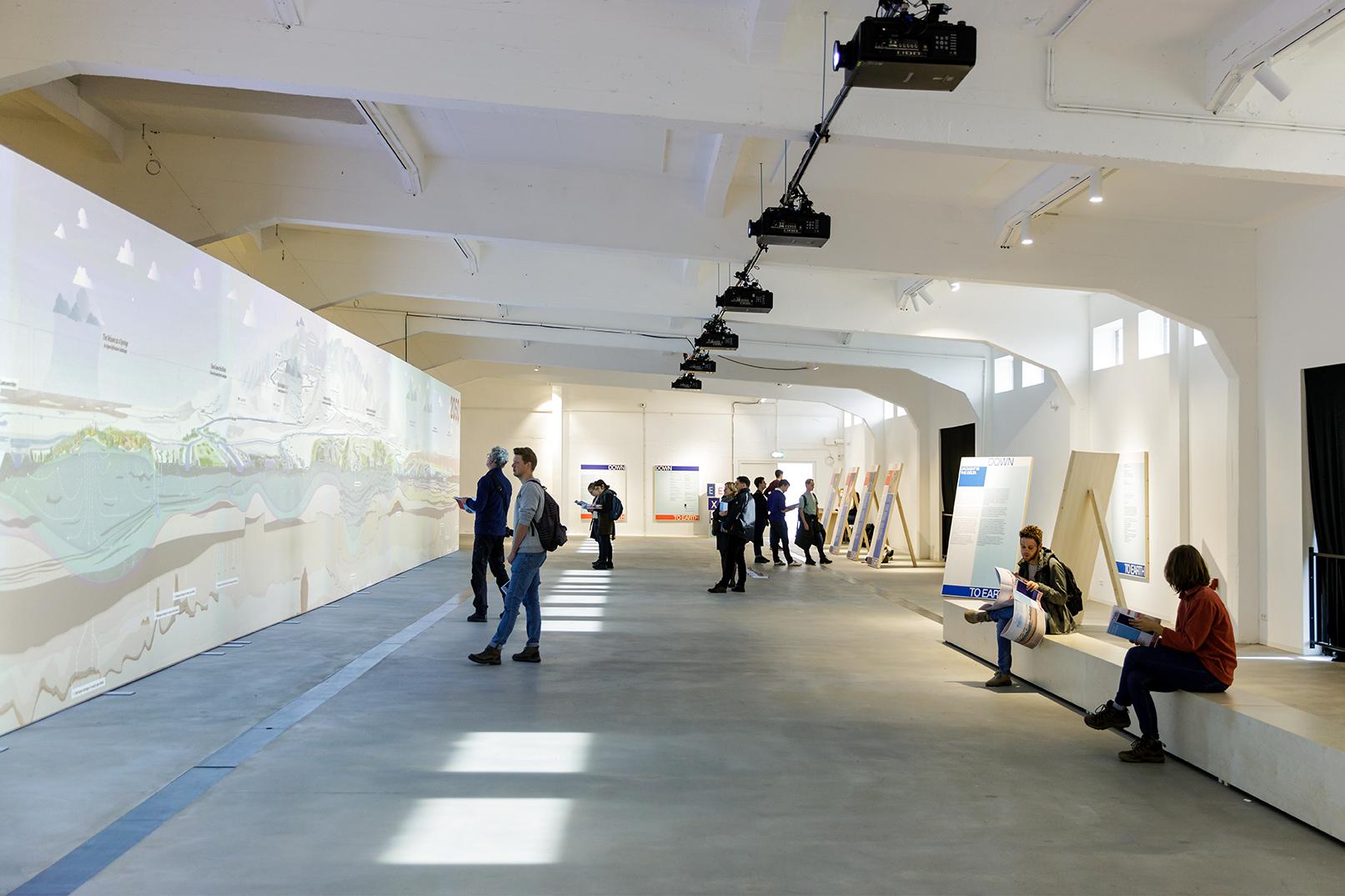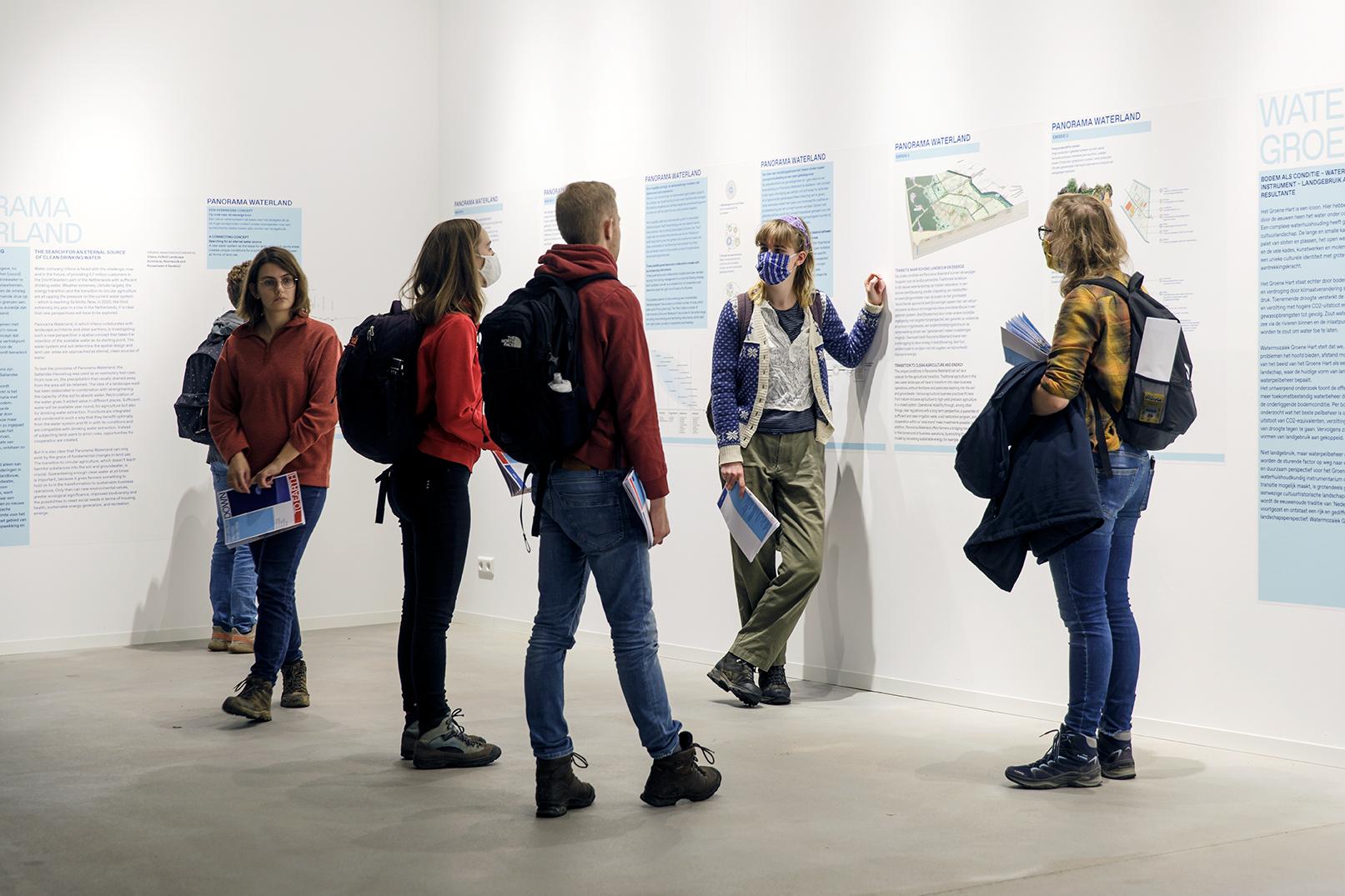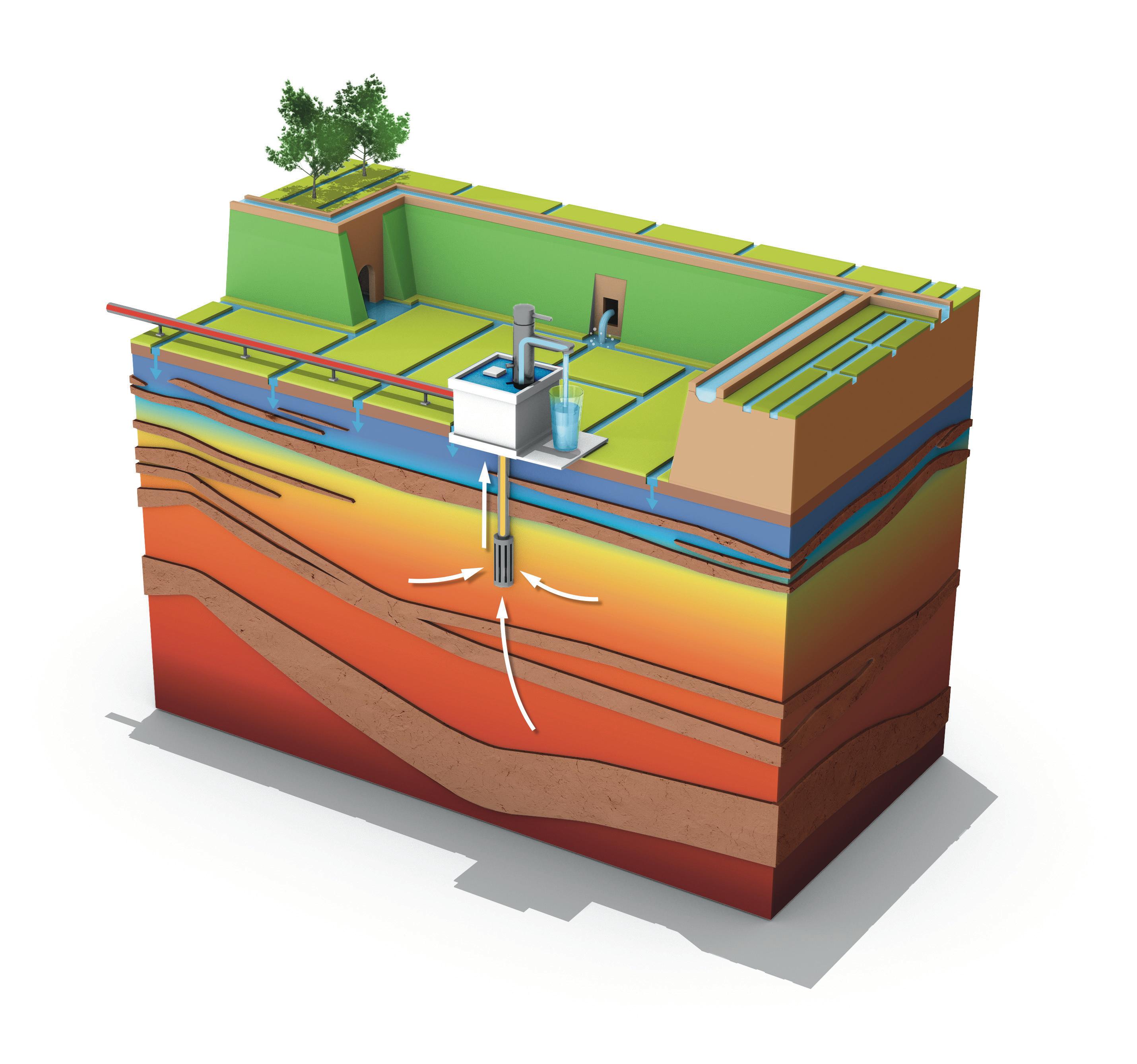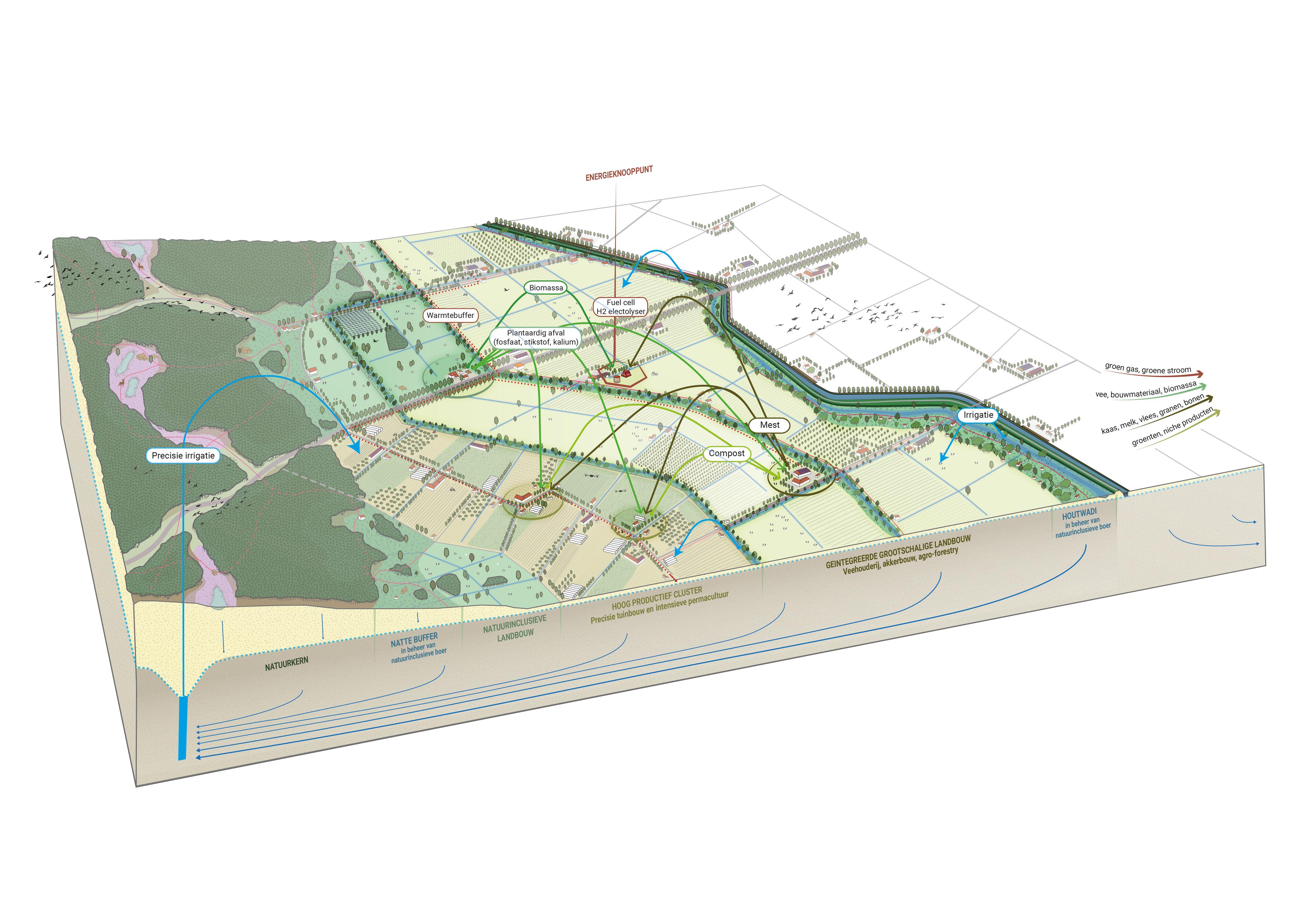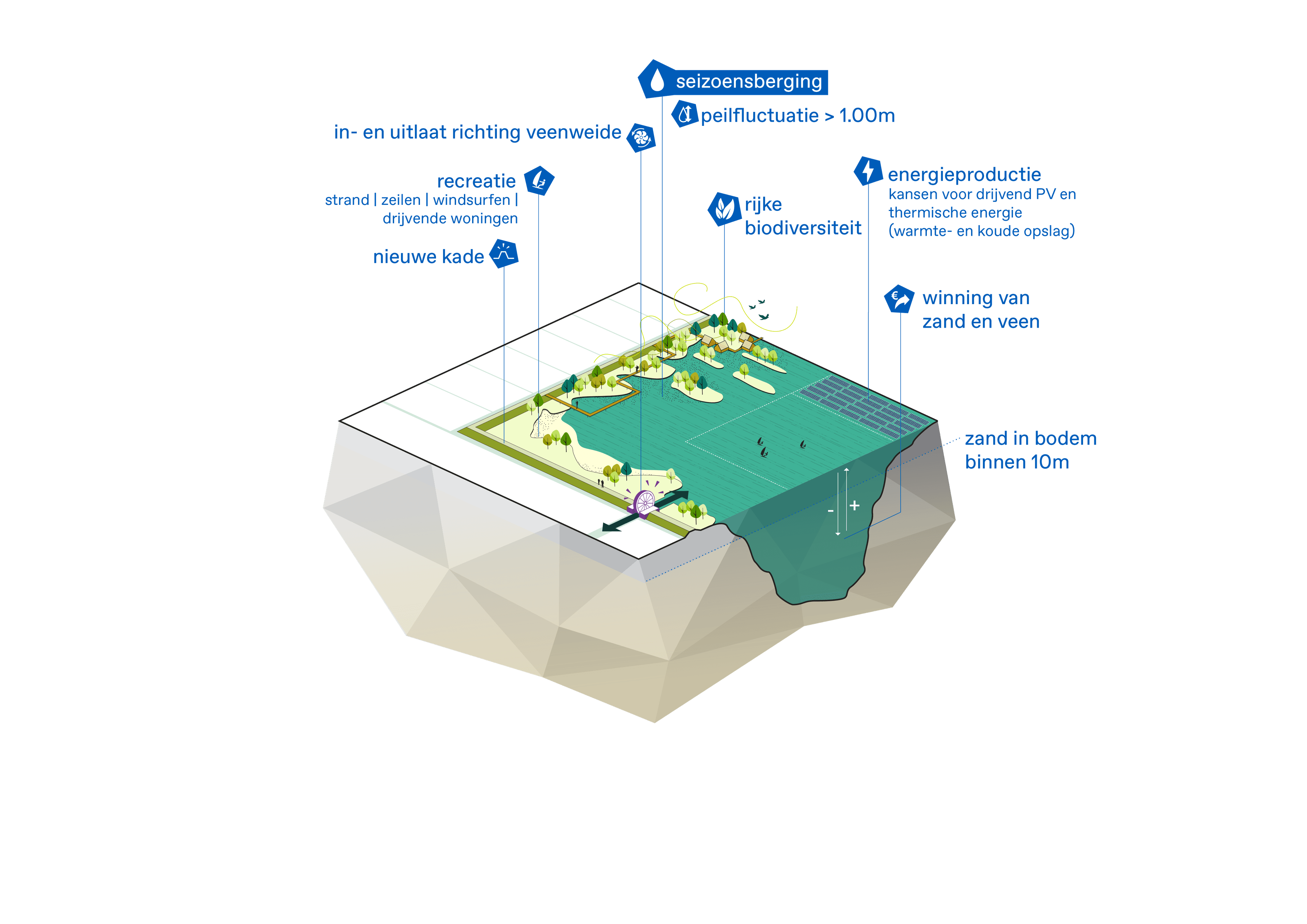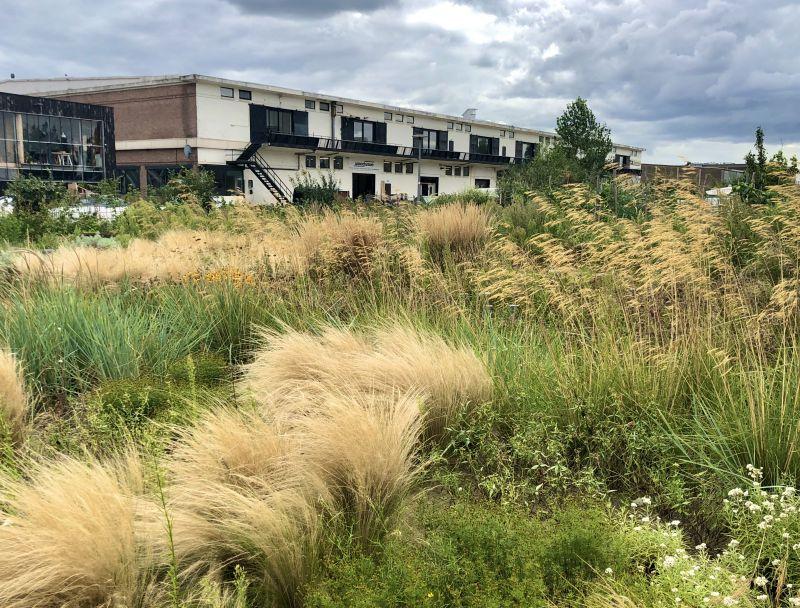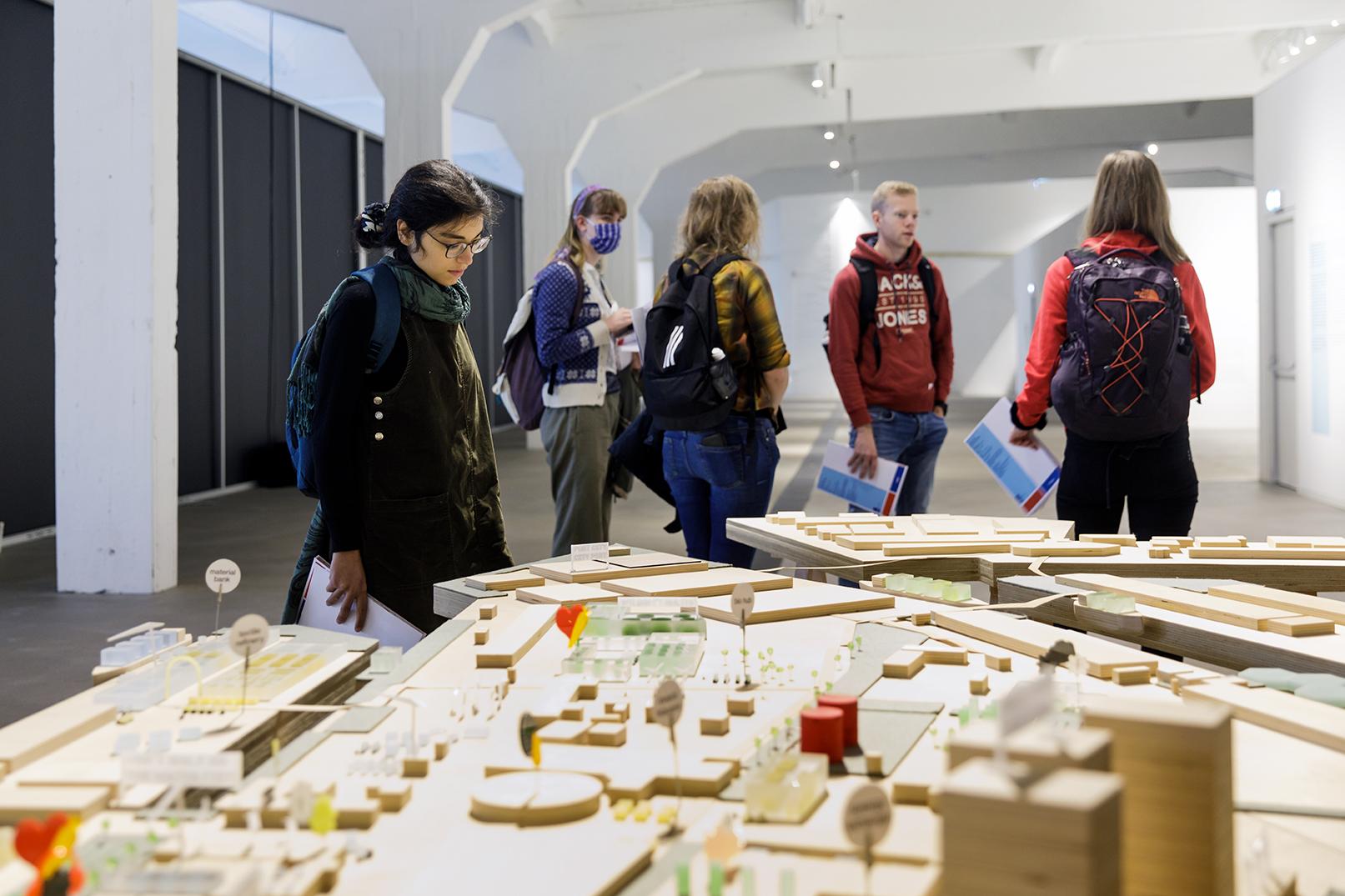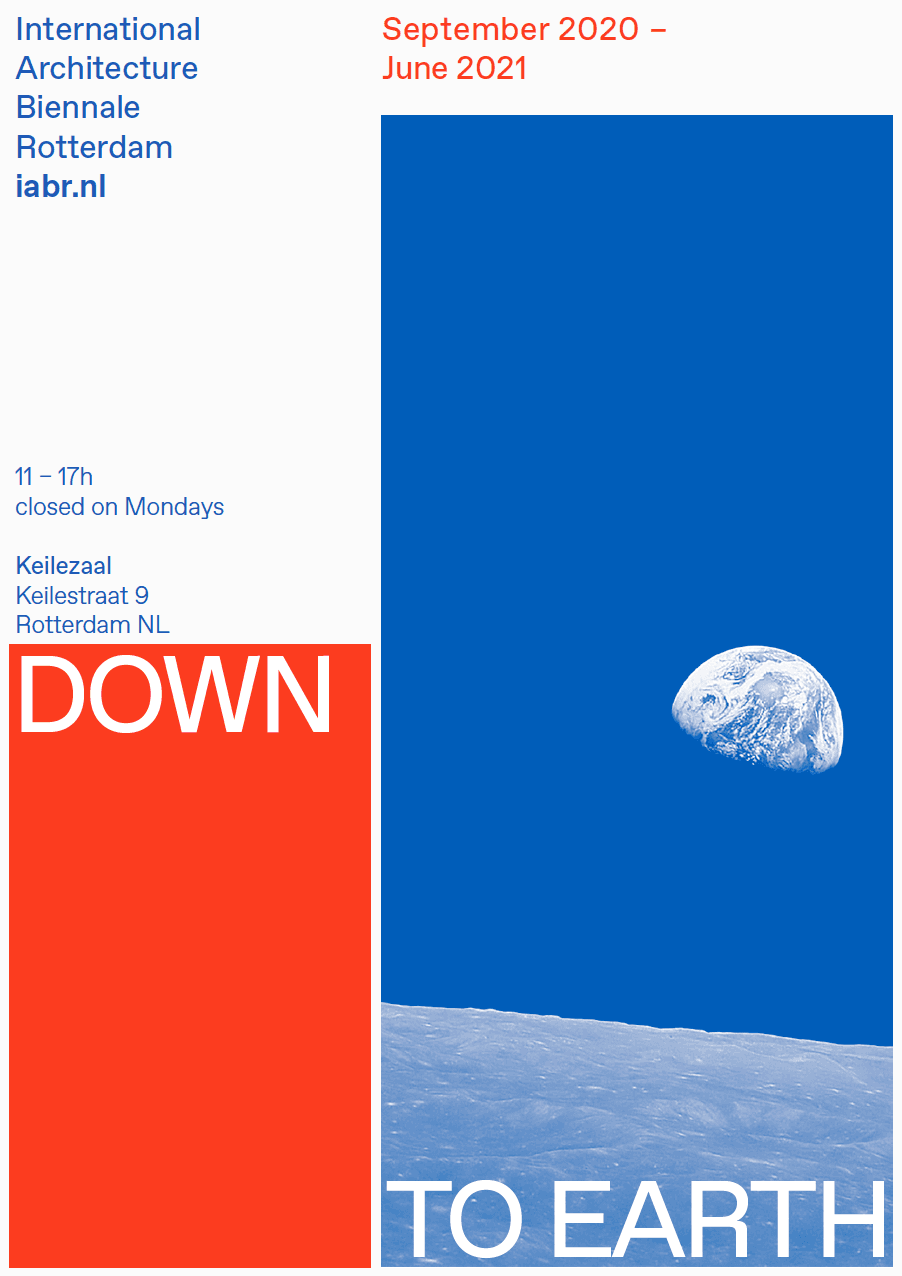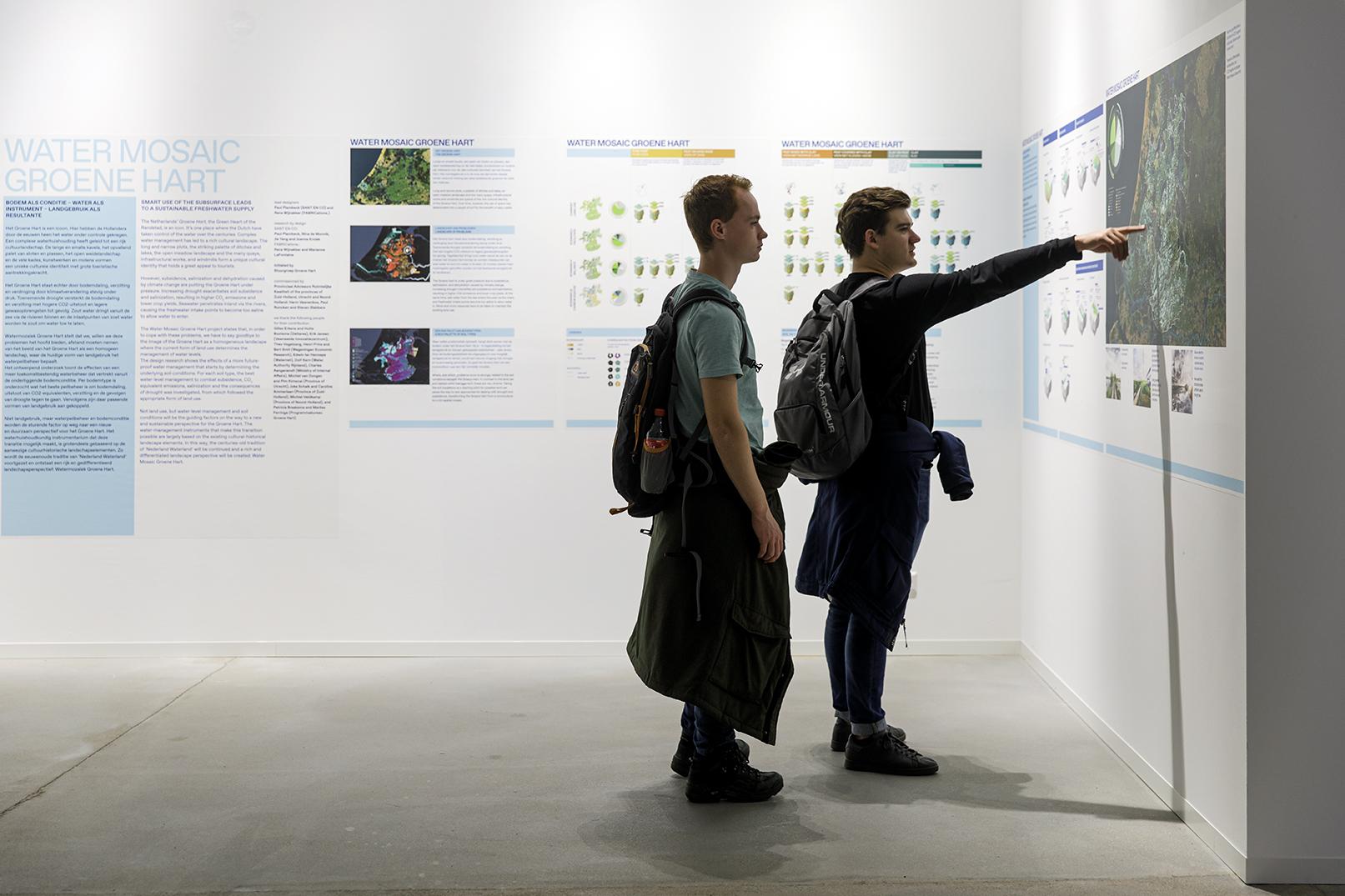For hundreds of years, the design of the Netherlands was primarily aimed at draining water quickly and efficiently to prevent flooding and increase agricultural productivity. Today, prolonged droughts mean that we need to find ways to retain water longer and allow it to penetrate deeper into the subsoil. The exhibition ‘Drought in the Delta’ presented the results of the IABR–Atelier of the same name. The Atelier, led by Marco Vermeulen (Studio Marco Vermeulen), explored various possibilities to increase the water buffering capacity of our delta landscape. The aim of this research by design was to develop building blocks for a new freshwater strategy, considering the increasingly intensive use of surface and subsurface areas due to current developments such as the energy transition, food production, and urbanization.
The exhibition was part of IABR: Down to Earth and presented projects by, among others, H+N+S Landscape Architects and De Urbanisten in addition to the results of Atelier Drought in the Delta.
